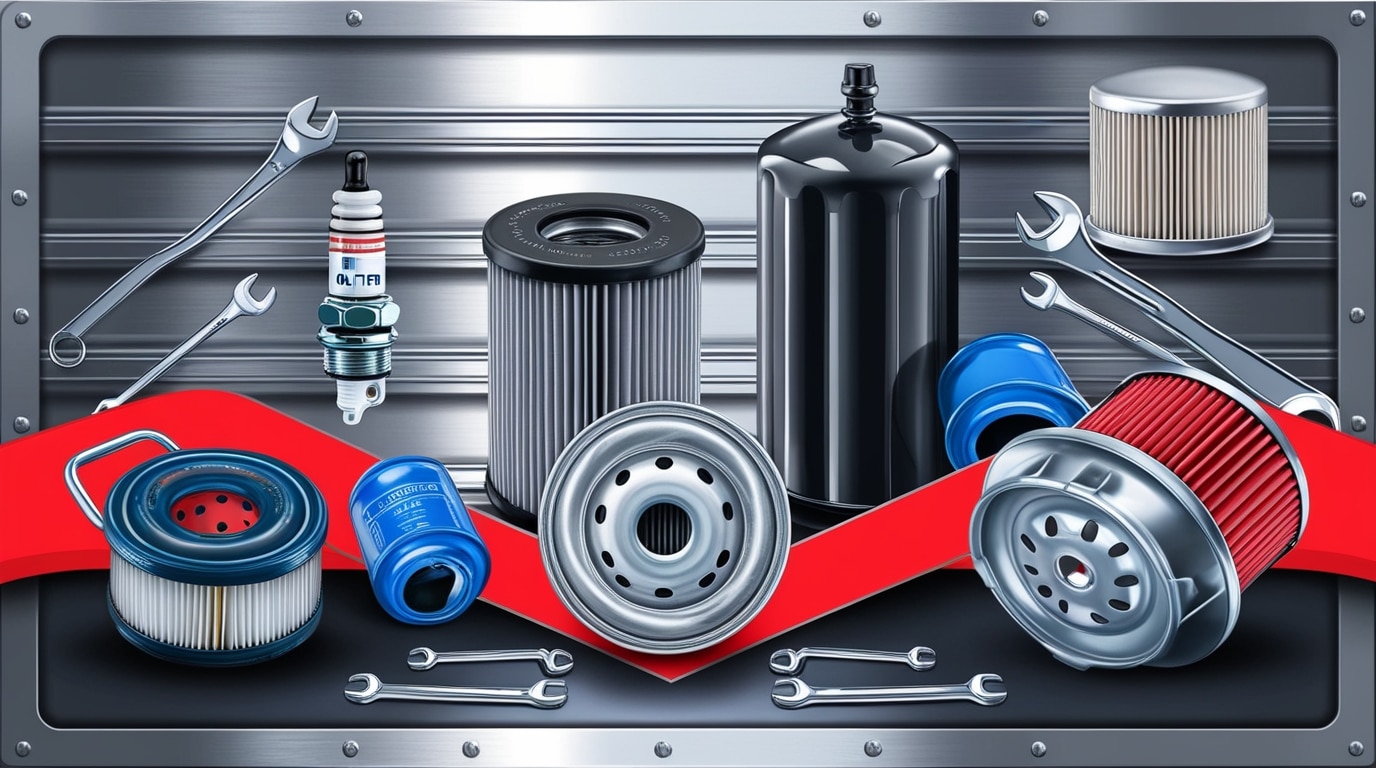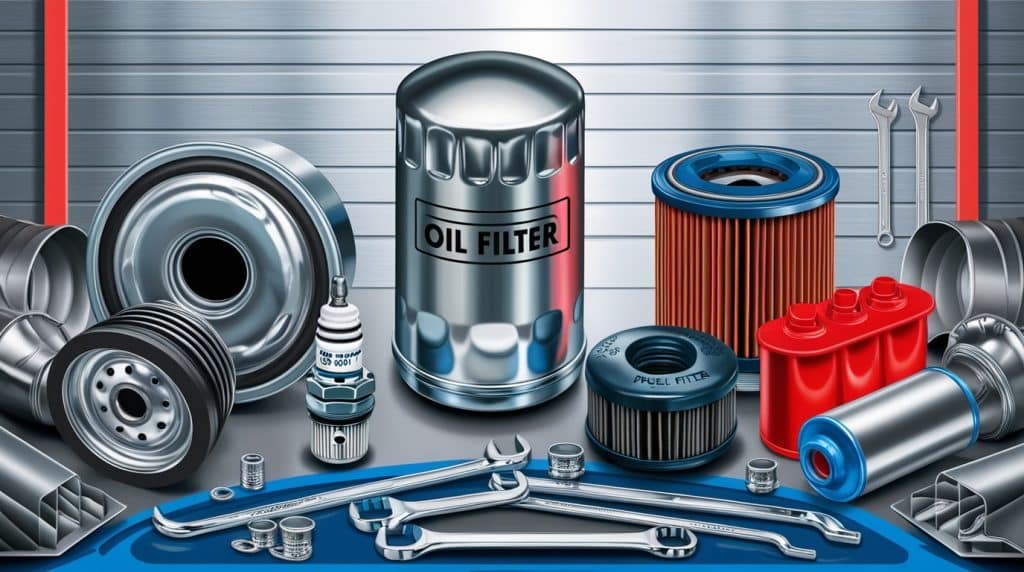Essential Car Parts for Maintenance: A Comprehensive Guide
Maintaining your vehicle in optimal condition is essential for ensuring its longevity, performance, and safety. Regular upkeep not only keeps your car running smoothly but also prevents costly repairs and enhances your driving experience. In this comprehensive guide, we will explore the essential car parts that require regular maintenance, why they are important, and how to properly care for them.
Introduction
Automobiles are complex machines composed of numerous parts that work together to ensure smooth operation. Regular maintenance of these parts is crucial to avoid unexpected breakdowns, improve fuel efficiency, and ensure the safety of both the driver and passengers. This guide will delve into the key components of your car that need regular attention and provide practical tips on how to maintain them effectively.
1. Engine Oil and Oil Filter
a. Importance of Engine Oil
Engine oil is the lifeblood of your vehicle’s engine. It lubricates the moving parts within the engine, reducing friction and wear. Over time, engine oil breaks down and becomes contaminated with dirt and debris, which can affect engine performance and longevity. The oil filter plays a crucial role in removing these contaminants from the oil, ensuring that it remains clean and effective.
b. Maintenance Tips
- Change Oil Regularly: It’s generally recommended to change your engine oil every 3,000 to 7,500 miles, depending on the type of oil used and your vehicle’s make and model. Check your owner’s manual for specific recommendations.
- Replace the Oil Filter: Always replace the oil filter when you change the oil to maintain clean oil and optimal engine performance.
- Monitor Oil Levels: Regularly check the oil level using the dipstick. Low oil levels can indicate a leak or excessive consumption, both of which need addressing.
c. How to Check and Change Engine Oil
- Warm Up the Engine: Run your engine for a few minutes to warm the oil. Warm oil flows more easily and helps in the removal of contaminants.
- Lift the Vehicle: Use a jack and jack stands to safely lift the car.
- Drain the Oil: Place a drain pan under the oil pan, remove the drain plug, and allow the oil to drain completely.
- Replace the Oil Filter: Use an oil filter wrench to remove the old filter and install a new one.
- Add New Oil: Replace the drain plug, add new oil using a funnel, and check the oil level.
2. Air Filter
a. Importance of the Air Filter
The air filter prevents dust, dirt, and other contaminants from entering the engine’s air intake. A clean air filter ensures that the engine receives a steady flow of clean air, which is crucial for efficient combustion and optimal engine performance.
b. Maintenance Tips
- Inspect Regularly: Check the air filter every 12,000 to 15,000 miles, or more frequently if driving in dusty conditions.
- Replace When Necessary: Replace the air filter if it appears dirty or clogged to maintain optimal engine performance.
c. How to Check and Replace the Air Filter
- Locate the Air Filter Housing: This is usually a rectangular or cylindrical box near the engine.
- Open the Housing: Unclip or unscrew the cover to access the air filter.
- Remove the Old Filter: Take out the old filter and inspect it for dirt and debris.
- Install the New Filter: Place the new filter into the housing and secure the cover.
3. Brake Pads and Rotors
a. Importance of Brake Pads and Rotors
Brake pads press against the rotors to slow down or stop your vehicle. Over time, brake pads wear out, and if not replaced, they can damage the rotors, leading to expensive repairs. Proper maintenance of brake pads and rotors is essential for safe driving.
b. Maintenance Tips

- Check Brake Pads: Inspect brake pads for thickness every 10,000 miles. Replace them if they are less than 1/4 inch thick.
- Listen for Noises: Squealing or grinding noises can indicate worn brake pads or damaged rotors.
- Inspect Rotors: Check rotors for grooves, warping, or excessive wear. Replace or resurface them as needed.
c. How to Check and Replace Brake Pads and Rotors
- Lift the Vehicle: Use a jack and jack stands to lift the car.
- Remove the Wheel: Take off the wheel to access the brake assembly.
- Remove the Brake Caliper: Unbolt the caliper to access the brake pads.
- Replace the Brake Pads: Remove the old pads and install new ones. Reassemble the caliper and wheel.
- Check the Rotors: If the rotors are damaged, replace or resurface them before reassembling the brakes.
4. Tires
a. Importance of Tires
Tires are the only contact between your car and the road. Properly maintained tires are crucial for handling, traction, and safety. Regular maintenance helps ensure that your tires perform well and last longer.
b. Maintenance Tips
- Check Tire Pressure: Inspect tire pressure monthly and keep it at the manufacturer’s recommended level.
- Rotate Tires: Rotate tires every 6,000 to 8,000 miles to ensure even wear.
- Inspect for Wear: Check tread depth regularly. Replace tires if the tread is below 2/32 of an inch.
- Align and Balance: Have your tires aligned and balanced to prevent uneven wear and improve handling.
c. How to Check and Maintain Tires
- Check Tire Pressure: Use a tire pressure gauge to measure and adjust pressure.
- Inspect Tread Depth: Use a tread depth gauge or the penny test to check for adequate tread.
- Rotate and Balance: Follow the vehicle’s recommended tire rotation pattern and have the tires balanced by a professional if you notice vibrations.
5. Battery
a. Importance of the Battery
The battery provides the electrical power needed to start your vehicle and run its electrical systems. A failing battery can lead to starting problems and affect other electrical components.
b. Maintenance Tips
- Check Battery Terminals: Inspect terminals for corrosion and ensure they are tightly connected.
- Test the Battery: Have the battery tested annually or if you notice starting issues.
- Replace When Needed: Replace the battery if it’s more than three years old or shows signs of weakening.
c. How to Check and Replace the Battery
- Inspect Terminals: Look for corrosion and clean the terminals if necessary.
- Test Voltage: Use a multimeter to check battery voltage or have it tested at an auto parts store.
- Replace Battery: Disconnect the old battery, remove it, and install a new one.
6. Coolant System
a. Importance of the Coolant System
The coolant system regulates the engine temperature by circulating coolant through the engine and radiator. Proper maintenance of the coolant system prevents overheating and engine damage.
b. Maintenance Tips
- Check Coolant Levels: Inspect the coolant reservoir regularly and top off if needed.
- Inspect for Leaks: Look for leaks around the radiator, hoses, and water pump.
- Flush the System: Flush the coolant system every 30,000 to 50,000 miles to remove old coolant and prevent corrosion.
c. How to Check and Maintain the Coolant System
- Check Coolant Level: Ensure the engine is cool before checking the coolant level.
- Inspect Hoses and Radiator: Look for leaks or damage.
- Flush and Refill: Drain old coolant, flush the system, and refill with new coolant.
7. Transmission Fluid
a. Importance of Transmission Fluid
Transmission fluid lubricates and cools the transmission, ensuring smooth operation and shifting. Low or dirty transmission fluid can lead to transmission problems.
b. Maintenance Tips
- Check Fluid Levels: Check transmission fluid levels regularly, especially if you notice shifting issues.
- Change Fluid: Replace transmission fluid every 30,000 to 60,000 miles, or according to the manufacturer’s recommendations.
c. How to Check and Maintain Transmission Fluid
- Check Fluid Level: Use the dipstick to check fluid level and color.
- Add or Replace Fluid: Top off or replace fluid as needed, following manufacturer guidelines.
8. Spark Plugs
a. Importance of Spark Plugs
Spark plugs ignite the air-fuel mixture in the engine’s cylinders, enabling combustion. Worn spark plugs can cause engine misfires, rough idling, and reduced fuel efficiency.
b. Maintenance Tips
- Inspect Spark Plugs: Check spark plugs for wear or deposits every 30,000 miles.
- Replace When Necessary: Replace spark plugs if they show signs of wear or fouling.
c. How to Check and Replace Spark Plugs
- Remove Spark Plugs: Use a socket wrench to remove old spark plugs.
- Inspect and Replace: Check the condition of the plugs and install new ones, ensuring the correct gap.
9. Belts and Hoses
a. Importance of Belts and Hoses
Belts and hoses are essential for various engine functions, including powering the alternator and circulating coolant. Worn or damaged belts and hoses can lead to breakdowns and engine damage.
b. Maintenance Tips
- Inspect Regularly: Check belts for cracks and fraying, and hoses for leaks and softness.
- Replace When Worn: Replace belts and hoses that show signs of wear or damage.
c. How to Check and Maintain Belts and Hoses
- Inspect Belts: Look for signs of wear such as cracks or fraying.
- Check Hoses: Squeeze hoses to check for softness or leaks.
- Replace as Needed: Replace worn belts and hoses promptly.
10. Exhaust System
a. Importance of the Exhaust System
The exhaust system directs harmful gases away from the engine and reduces noise. A faulty exhaust system can lead to performance issues and increased emissions.
b. Maintenance Tips
- Listen for Noise: Unusual noises from the exhaust system can indicate problems.
- Inspect for Rust and Leaks: Check for rust, holes, or leaks in the system.
- Replace Parts as Needed: Replace damaged components to ensure proper function.
c. How to Check and Maintain the Exhaust System
- Listen for Noise: Pay attention to any unusual sounds from the exhaust.
- Inspect the System: Look for visible rust, holes, or leaks.
- Replace Components: Replace damaged parts to restore proper function.
11. Fuel System
a. Importance of the Fuel System
The fuel system is responsible for delivering fuel from the tank to the engine. It includes components such as the fuel pump, fuel filter, and fuel injectors. Proper maintenance of the fuel system ensures efficient engine performance, better fuel economy, and smooth operation.
b. Maintenance Tips
- Replace the Fuel Filter: Replace the fuel filter every 20,000 to 30,000 miles to prevent debris from clogging the fuel injectors.
- Inspect Fuel Lines: Check fuel lines for leaks or cracks that could lead to fuel loss or safety issues.
- Clean Fuel Injectors: Consider using fuel injector cleaner periodically or having them professionally cleaned to ensure proper fuel delivery.
c. How to Check and Maintain the Fuel System
- Replace the Fuel Filter: Locate the fuel filter, usually under the vehicle or near the engine. Remove the old filter and install a new one, ensuring proper connections.
- Inspect Fuel Lines: Visually inspect fuel lines for signs of wear or leaks. Replace any damaged sections immediately.
- Clean Fuel Injectors: Use a fuel system cleaner or have them cleaned by a professional if you notice poor performance or reduced fuel efficiency.
12. Power Steering Fluid
a. Importance of Power Steering Fluid
Power steering fluid helps in the smooth operation of the steering system, making it easier to turn the wheel. Low or dirty power steering fluid can lead to steering problems and increased wear on the steering components.
b. Maintenance Tips
- Check Fluid Levels: Regularly check the power steering fluid level and top off if necessary.
- Inspect for Leaks: Look for leaks around the power steering pump and hoses.
- Flush the System: Consider flushing the power steering fluid every 50,000 miles to remove contaminants and ensure smooth operation.
c. How to Check and Maintain Power Steering Fluid
- Check Fluid Level: Locate the power steering reservoir and use the dipstick or level indicator to check the fluid level.
- Add Fluid: If the level is low, add the recommended type of power steering fluid.
- Inspect for Leaks: Look for leaks around the pump and hoses. Repair any leaks promptly.
13. Wipers and Washer Fluid
a. Importance of Wipers and Washer Fluid
Wipers and washer fluid are crucial for maintaining visibility in adverse weather conditions. Properly functioning wipers and a full washer reservoir ensure that your windshield remains clear and free of obstructions.
b. Maintenance Tips
- Replace Wiper Blades: Replace wiper blades every 6 to 12 months or when they start to streak or skip.
- Top Off Washer Fluid: Regularly check the washer fluid level and top off with the appropriate fluid.
- Inspect for Damage: Check wiper arms and blades for any damage or wear.
c. How to Check and Maintain Wipers and Washer Fluid
- Replace Wiper Blades: Lift the wiper arms and remove the old blades. Attach new blades according to the manufacturer’s instructions.
- Top Off Washer Fluid: Open the washer fluid reservoir and pour in the recommended fluid.
- Inspect Wipers: Ensure that wiper arms are secure and inspect the blades for any damage or deterioration.
14. Cabin Air Filter

a. Importance of the Cabin Air Filter
The cabin air filter cleans the air entering the interior of your vehicle through the heating and air conditioning system. A clean cabin air filter helps maintain air quality and ensures efficient operation of the HVAC system.
b. Maintenance Tips
- Replace Regularly: Replace the cabin air filter every 15,000 to 30,000 miles or as recommended by your vehicle’s manufacturer.
- Check for Debris: Inspect the filter for leaves, dirt, or other debris that may obstruct airflow.
c. How to Check and Replace the Cabin Air Filter
- Locate the Filter: The cabin air filter is typically located behind the glove compartment or under the dashboard.
- Remove the Old Filter: Open the access panel, remove the old filter, and inspect it for dirt and debris.
- Install the New Filter: Insert the new filter into the housing and secure the access panel.
15. Suspension System
a. Importance of the Suspension System
The suspension system supports the vehicle’s weight, absorbs shocks from the road, and helps maintain tire contact with the road surface. Proper maintenance ensures a smooth ride and good handling.
b. Maintenance Tips
- Check Shock Absorbers: Inspect shock absorbers for leaks and reduced performance. Replace if necessary.
- Inspect Struts: Look for signs of wear or damage in the struts, which are crucial for handling and ride quality.
- Check for Alignment Issues: Regularly check and align the suspension to prevent uneven tire wear and handling issues.
c. How to Check and Maintain the Suspension System
- Inspect Shock Absorbers: Look for leaks around the shock absorbers and check for any signs of reduced performance.
- Check Struts: Examine struts for visible damage or signs of wear.
- Alignment: Have the vehicle’s alignment checked and adjusted by a professional if you notice handling issues or uneven tire wear.
Conclusion
Regular maintenance of essential car parts is vital for keeping your vehicle in top condition. By focusing on components such as engine oil, air filters, brake pads, tires, and more, you can ensure that your car runs smoothly, safely, and efficiently. Following a maintenance schedule, inspecting parts regularly, and addressing issues promptly can prevent costly repairs and enhance your driving experience. With proper care and attention, your vehicle will continue to serve you well for many miles to come.

